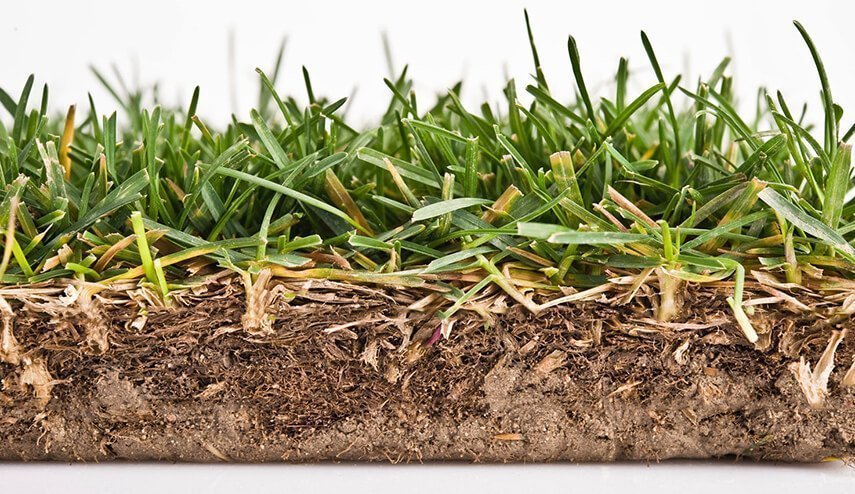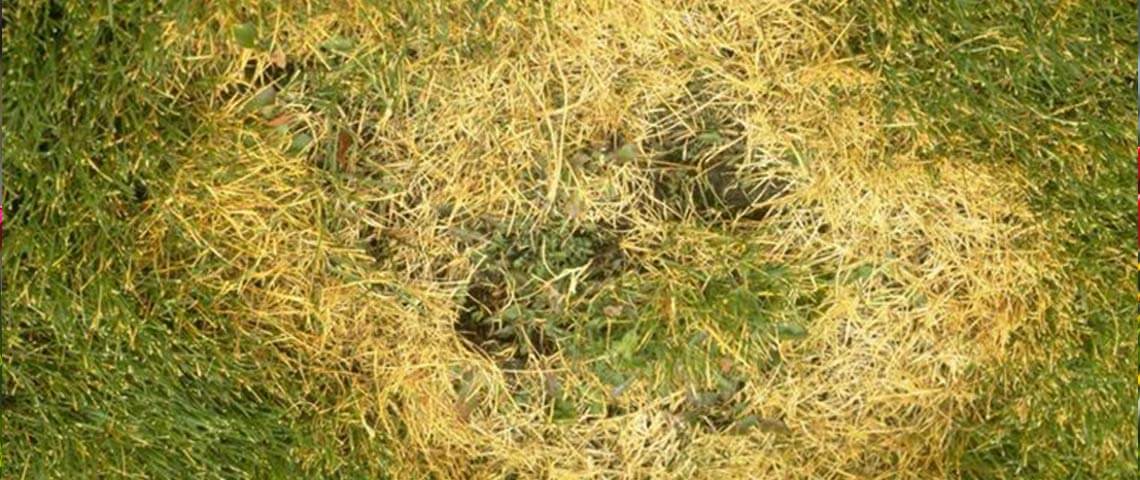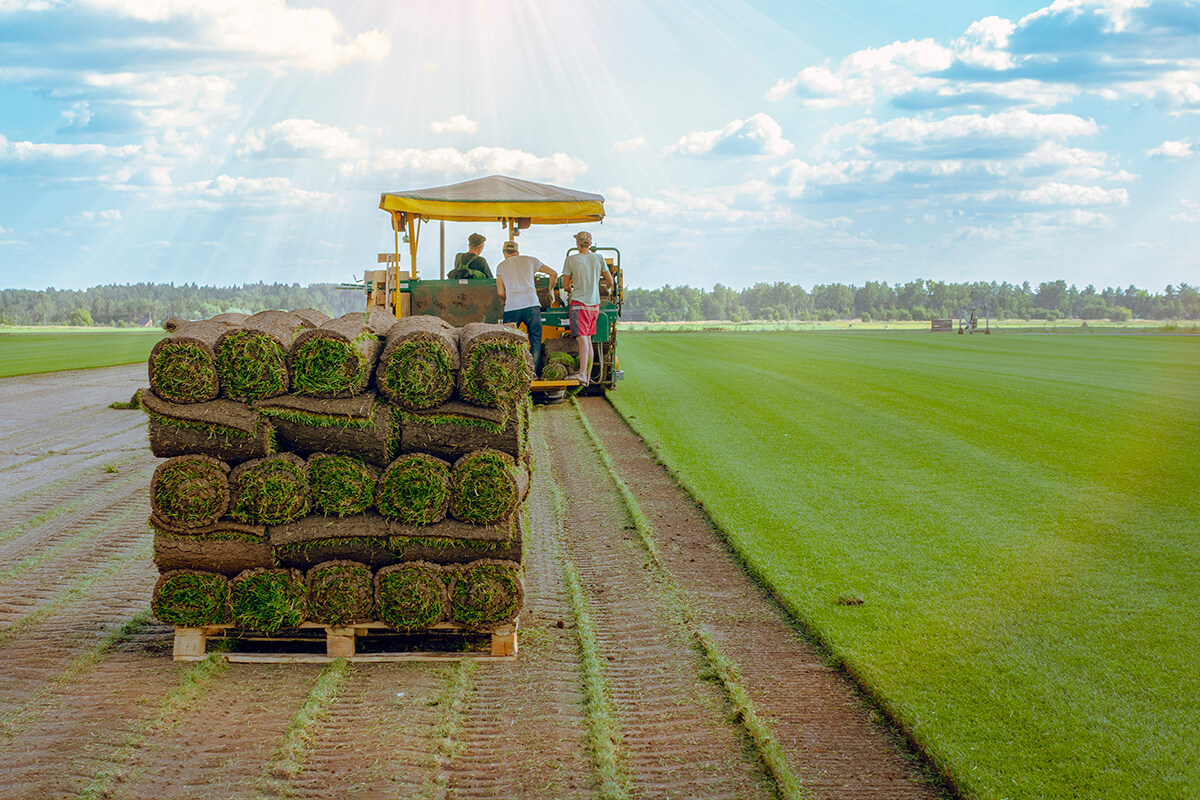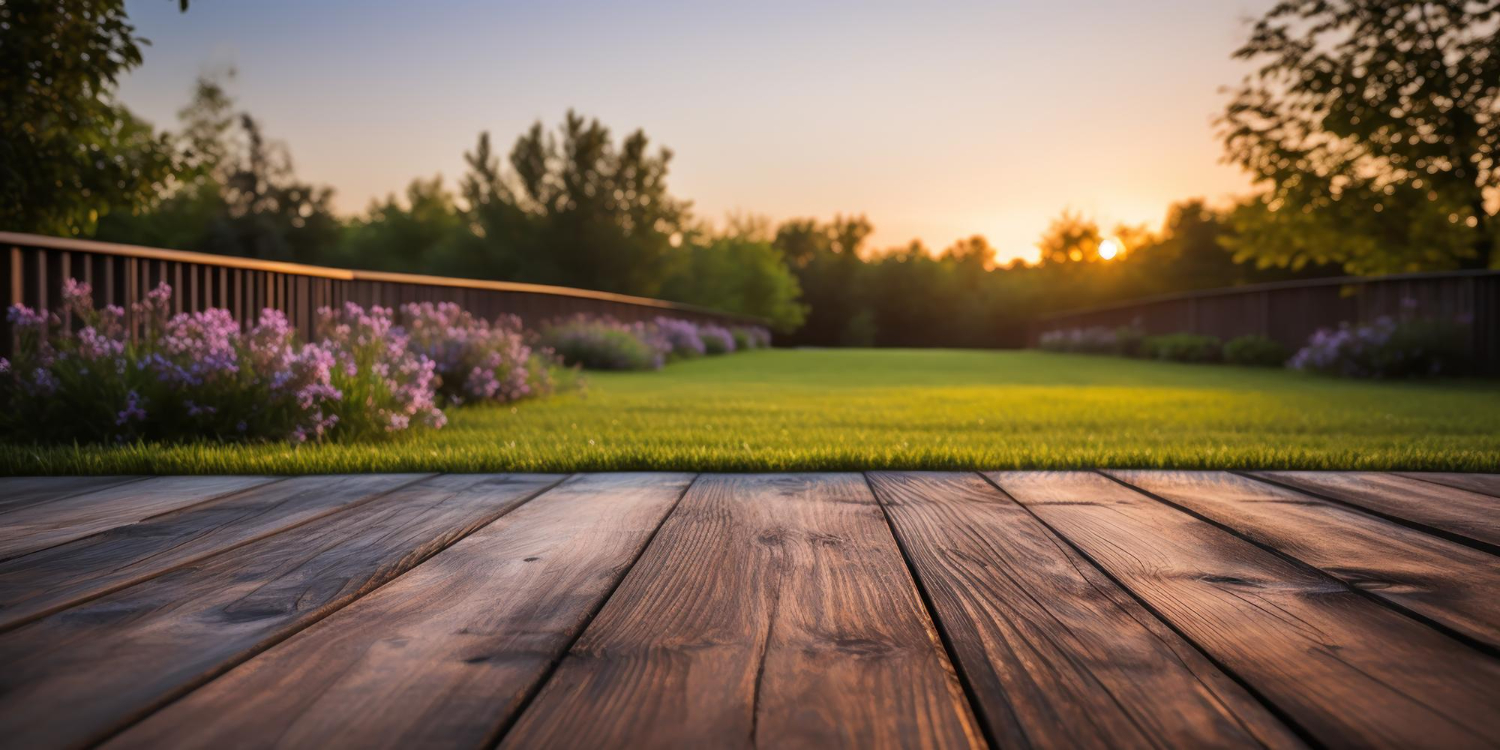Dealing With Common Challenges Of Fescue Lawns: Brown Patch, Thatch, And Erosion
October 30, 2023
Category, Fescue Sod

Fescue lawns are popular in the Midwest for many reasons. They look beautiful and feel soft and lush, and keep their color well through the winter. Compared to other grasses, fescue is tolerant of both the cold and the heat and drought that are common in the region. Fescue is also fairly resistant to pests, weeds, and disease, but it does face some challenges. Learn how to recognize, prevent and treat the most common issues that affect fescue lawns.
Get fescue sod in the Sioux City area.
Brown Patches In Fescue Lawns
Identifying the Cause
Brown patch commonly attacks fescue in late spring throughout the summer when temperatures are high in the Midwest. Brown patch will initially be circular patches of grass up to 3 feet in diameter that are sunken and brown and dead as seen below. Grayish margins appear around the rings of the patches as it expands, reaching up to 20 feet in diameter.
Understanding the Factors Behind Brown Patches in Fescue Lawns
Brown patch is caused by the fungus species rhizoctonia solani. It thrives in warm, wet conditions and high humidity, both of which are common in Iowa and throughout the Midwest. Overwatering, improper mowing techniques, thatch buildup, and overfertilization are the most common causes of brown patch.
Brown Patch Remediation: Strategies for Restoring Health to Affected Areas in Fescue Lawns
Brown patch certainly doesn’t look appealing, but the good news is that it won’t usually cause long-term damage to your lawn unless your fescue is less than a year old. If you do notice brown patch on your fescue, you should take the following steps:
- Use proper irrigation to avoid overwatering your lawn
- Follow best practices for mowing so your fescue is not cut too short
- Dethatch your lawn or hire a professional to do it
Thatch
Thatch is a layer of both living and dead tissue between the soil surface and grass leaves. While a small amount of thatch is actually beneficial to your lawn, it can become a breeding ground for disease and pests if it gets too thick. If thatch is greater than half an inch, you’ll want to dethatch your lawn with a vertical mower or power rake.
Thatch Prevention
The easiest way to deal with thatch is to prevent it from getting too thick in the first place. The best way to do this is with a good lawn maintenance program. That prevention techniques for Iowa lawns include:
- Fertilize your lawn properly and at the right time of year
- Aerate your lawn to improve drainage and prevent soil from becoming compacted
- Mow your lawn regularly, with a mulching mower if possible, but avoid cutting too short
- Avoid pesticides unless absolutely necessary and consult with a professional before applying
Erosion
Erosion wears away at soil, either naturally from rain, wind, and ice or from outside forces like animal grazing or construction. When erosion removes topsoil, you’re left with holes and slopes that can be unsightly or even dangerous.
Preventing and Repairing Erosion Issues in Fescue Lawns
You can’t control the forces that cause erosion, but you can thoughtfully plan and maintain your yard to prevent erosion and repair its effects. Try these tips
- Fescue sod installation provides instant grass to stabilize soil and protect topsoil from erosion
- Seed your lawn to grow grass the slower way
- Plant trees along slopes or hillsides
- Create a rain garden or swale to soak up rain and reuse it on your property
- Install a drip irrigation system to avoid overwatering
- Mulch (best used alongside other erosion control methods)
Restoring and Enhancing Fescue Lawns in Areas with Brown Patches, Thatch, or Erosion
Even with careful care, fescue lawns may fall victim to brown patches, excess thatch and erosion. These actions can restore your fescue lawn to its full glory quickly:
- Reseeding and overseeding to ensure that your soil is properly protected
- Adjusting watering practices to use optimal irrigation techniques
- Fertilize your fescue lawn to promote recovery in trouble areas
- Vegetation control methods to reduce damage from weeds and insects
- Conduct regular soil tests to assess the health of your soil
- Invest in professional lawn care services to regularly maintain and inspect your fescue lawn
Get Professional Help For Fescue Lawn Challenges In Iowa
Contact your local fescue lawn professionals for more tips and referrals to ongoing fescue lawn care in Iowa.



